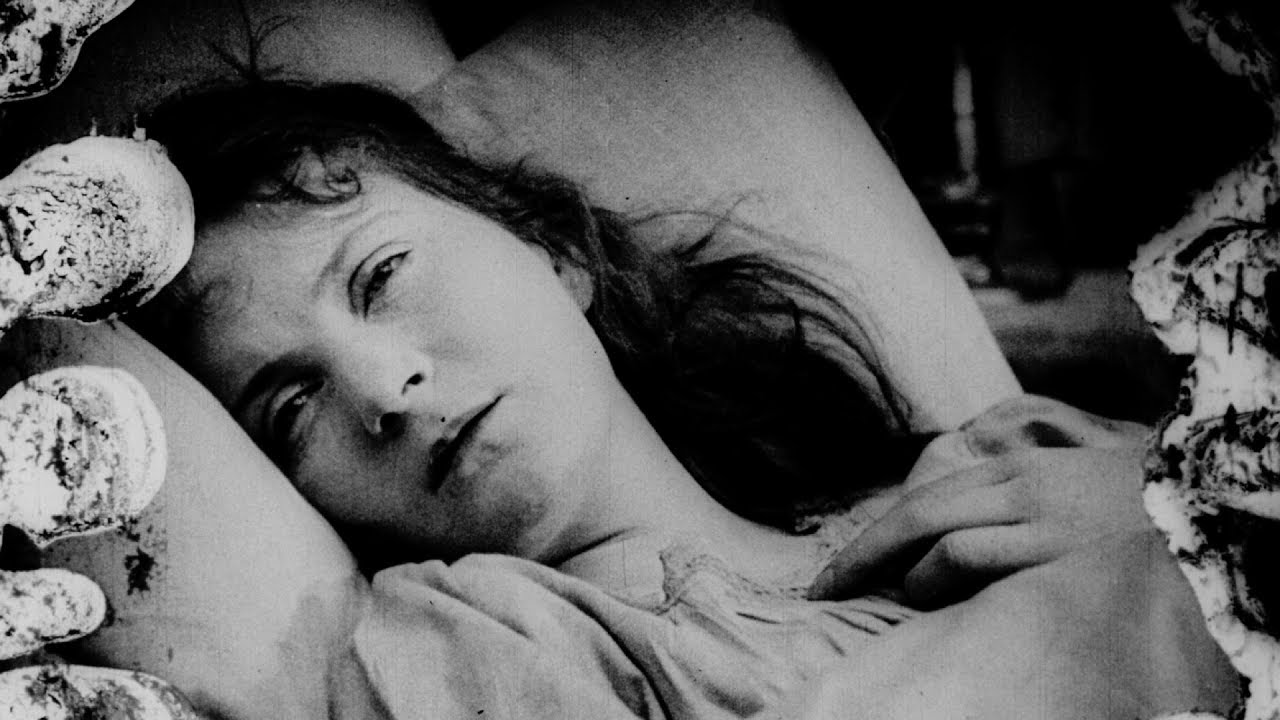by Glenn Dunks

If you have ever watched a Bill Morrison film, then you will have surely remember him for the way his films appear as if they are deteriorating before your eyes. Best known for works such as Decasia that are assembled out of weathered, beaten and sometimes even partly destroyed reels of film celluloid, Morrison’s films often play with the concept that film – the physical, tactile product of film itself just as much as the broad term for motion pictures as we know them – is not something we should ever be flippant about.
His movies are made out of parts of other movies, its true -- clips and excerpts taken from decaying reels that most could consider at home in a rubbish tip. Many may find his aesthetic challenging, but there is something so delightfully classical about the way he repurposes any image that sits atop a filmstrip. His work breathes new life into old, unwanted, and unused works so that they may be seen anew in a new light, a new form and allow somebody’s hard work to prosper once more...

Morrison, then, was the perfect person to tell the story of Dawson City, a town in the far north of Canada’s Yukon. The former Gold Rush hub was a thriving part of the world as people flocked in the hopes of striking it rich. It was also the end of the line for movie distribution companies. Dawson City: Frozen Time is more conventional film that the aforementioned Decasia – it moves and flows like a traditional documentary at many times, with a clear central narrative, talking heads, and neatly assembled archival footage.
The way Morrison manipulates footage in these once-lost films movies to tell not just the story of those films, but the story of Dawson itself is so sublime and a treat considering some of these materials are over 100 years old. Movies, some of which only seconds of which exist, often play this kind of duel role in Morrison’s film. They can represent the exotic life of Dawson in the gold era and the dramatic (often foolish) scope of Canadian filmmakers in the 1920s and ‘30s. It’s a testament to Morrison, once again working as his own editor, that even through on the surface the structure is unfussy, traditional and perhaps some might say even unremarkable, he has compiled a film that is completely and utterly remarkable. A bold work of art that, to compare to an artist working on a canvas, is full of wide strokes and elegant shapes that nonetheless come together to make something powerful and unique and full of small cherishable moments. Something awash in a hundred years of dreams and the memories and the fumes of memories that power our collective love of cinema.
Discovered decades ago in 1978 and only now seeing the light of day, this archive-in-the-permafrost encompassed 533 film reels of 150 kilometres and 106 hours of film. Dawson City: Frozen Time for comparison is only 120 minutes. The glimpses and glimmers we see from titles such as The Stolen Paradise (1917), Bread (1918), The Half Breed (1918), It Happened to Adele (1917), The Iron Hand (1916), The Seven Pearls (1917) and Polly of the Circus (1917) made my eyes burst with awe and wonder even when their images were frequently riddled in deterioration marks and disfiguring scratches that nonetheless can’t completely distract from the beauty on display.

Dawson City is a haunted film and a haunting one. Its elegiac tone a captivating one that occasionally swerves from triumphant to appropriately funereal, a mournful pall overlaying what we see for the hundreds of films that we will never get the opportunity to witness even in snippet form (many were dumped into the Yukon river, burned or just lost to time). Morrison has made the only fitting tribute I can possibly imagine and the irony is not lost on me that so many films had to be destroyed for it to even exist. Put simply, Dawson City: Frozen Time is a masterpiece. In a year of movies that have left me thoroughly grasping for just a little bit more, it’s somewhat fitting that a film about all that has been lost is the one I have truly found worthy of every praise-filled adjective in the book.
Release: Out now on home entertainment.
Oscar Chances: It's on the Academy long list. This would be the moment for the Academy to finally recognise a legend in the medium, but Morrison hasn't reached Wiseman levels of industry respect just yet and the documentary branch are oddly reticent towards rewarding documentaries about movies (unlike the rest of the Academy). One hopes critics awards stump for it.